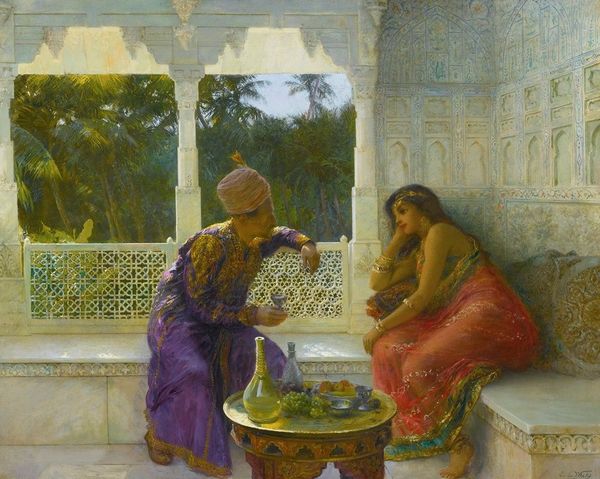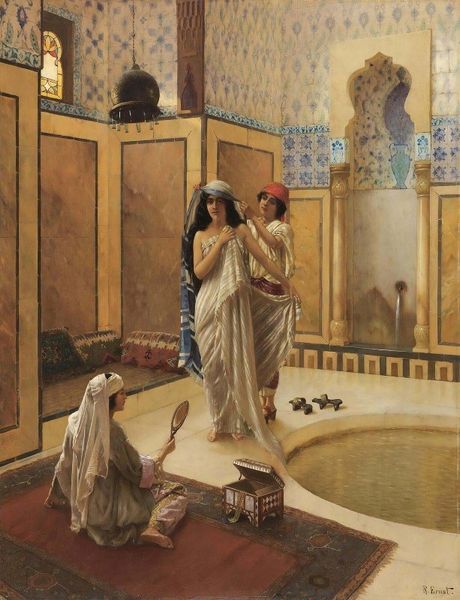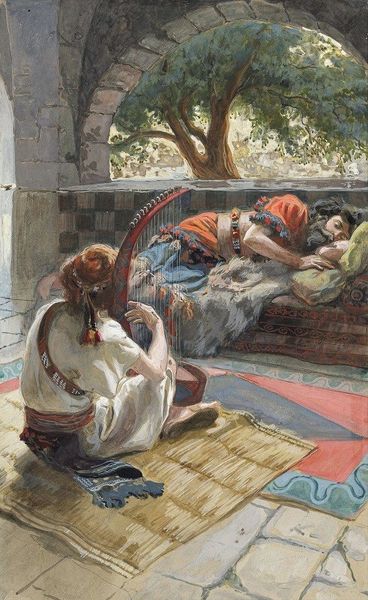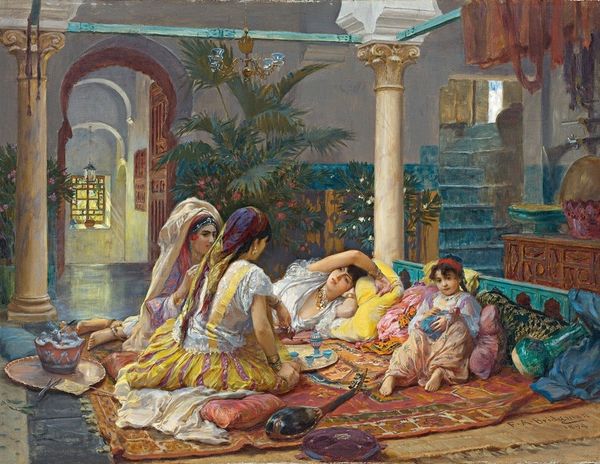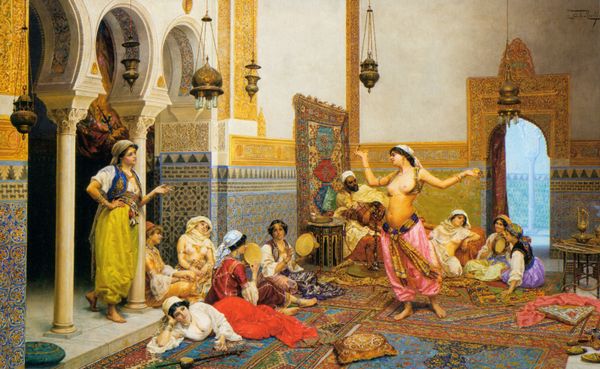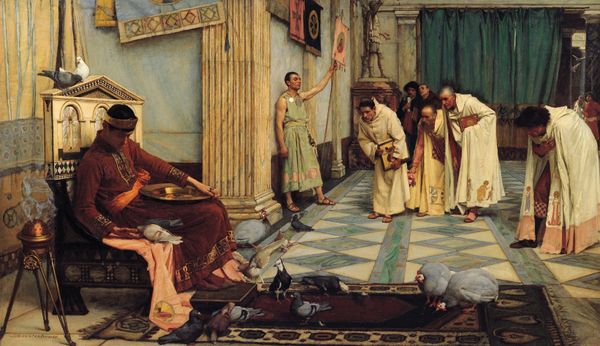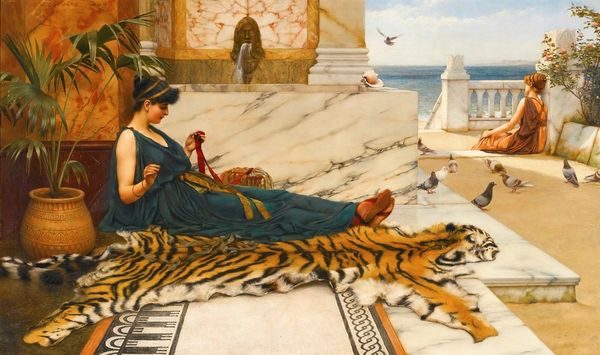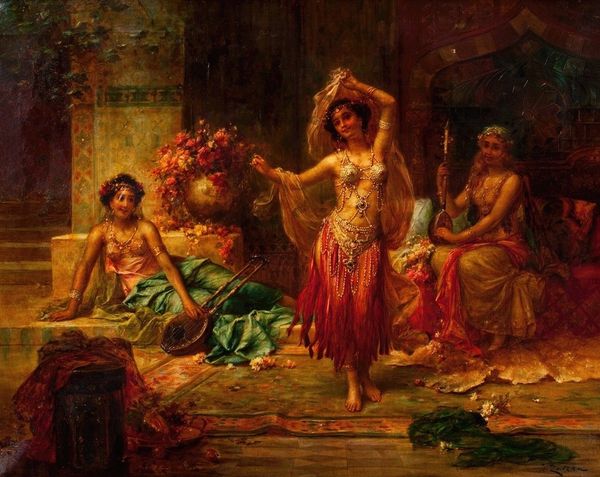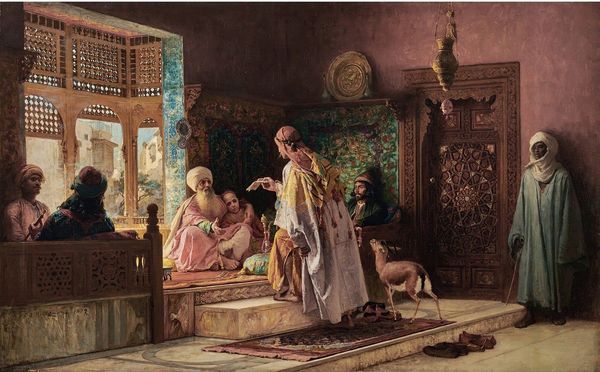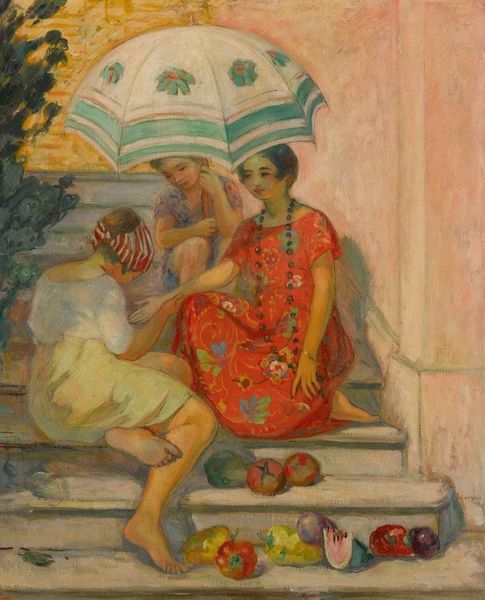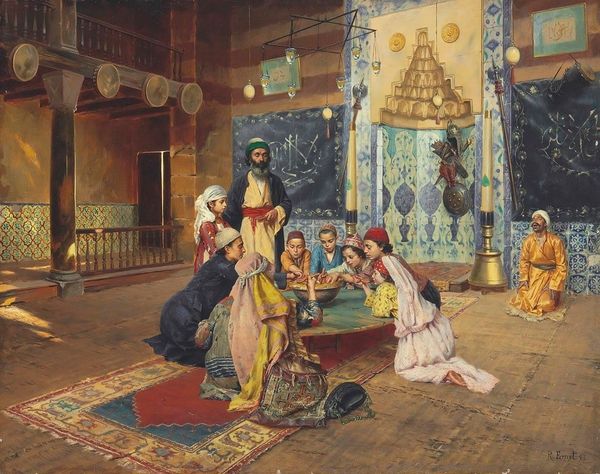
painting, oil-paint
#
portrait
#
painting
#
oil-paint
#
oil painting
#
romanticism
#
orientalism
#
mythology
#
genre-painting
#
academic-art
Copyright: Public Domain: Artvee
Curator: “Myrrh, Aloes and Cassia”, painted by John Collier. What are your initial impressions? Editor: Well, there’s a definite languid feel to it. The composition centers on a reclining figure, possibly a noblewoman, with attendants nearby. The textiles look incredibly luxurious; I wonder how Collier achieved that shimmering effect. How should we interpret its presentation of labor and luxury? Curator: Focus on the materiality, precisely. This orientalist painting hinges on the very specific display of goods. Consider the labor involved in producing those shimmering fabrics. Look at the figure holding up what seems to be an elaborate shawl; her labour, though not as lavish as the reclinant subject, is still depicted with just as much value and artistic skill. How do you read the social relationships suggested by the textures and materials? Editor: So you are saying the painting is less about the subject and more about highlighting the economics of colonialism at the time. But isn’t there the danger of idealizing this depiction? Curator: The luxury certainly underscores the inherent class disparity. However, if we examine it materialistically, we see the means of artistic production meeting colonial enterprise. Consider the social context - the market forces shaping this type of image, appealing to wealthy patrons who might consume these kinds of luxurious goods and enjoy a romanticized vision of distant lands. The appeal hinges on exploiting exoticism for commercial gain. Editor: So it’s less a neutral depiction and more an active participant in that colonial power dynamic through art as a commodity. I guess understanding its production and the society it came from makes the image more powerful. Curator: Precisely. Collier used his technique to not simply record, but also participate in the exchange and reinforcement of power, visible through even the shimmers in the painted fabric. Editor: That really gives me a different perspective. Seeing the work now as a product of its time, intrinsically linked to global power structures through the oil paints that are so prevalent. Thanks!
Comments
No comments
Be the first to comment and join the conversation on the ultimate creative platform.
